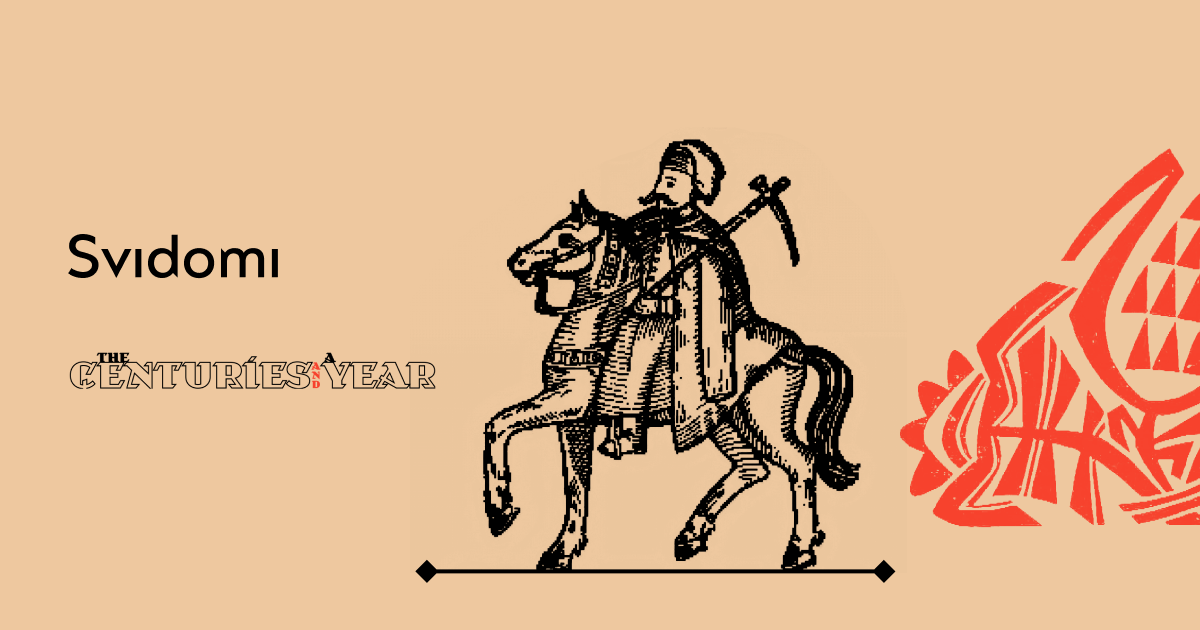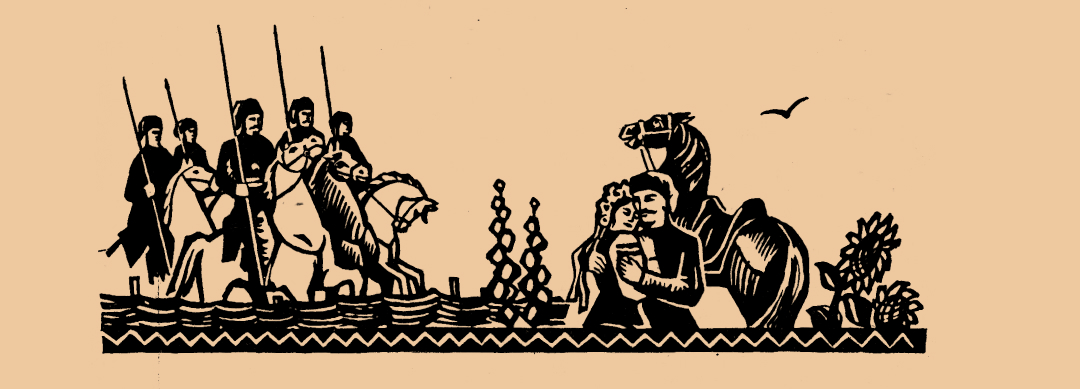State Formation Scenarios: Why the Ukrainian State Did Not Survive Earlier

Volodymyr Vynnychenko met the spring of 1918 in a bad mood. The German military brought General Pavlo Skoropadskyi to power, and the socialist Vynnychenko left Kyiv and lived in a country house near Kaniv. Left-wing politicians waged an underground struggle against Skoropadskyi, and his police and secret service kept an eye on them. It was under such circumstances of internal discord that Vynnychenko wrote down a phrase in his diary that became famous:
"Who wants to read Ukrainian history has to take bromine – it is to such an extent a tragic, senseless, clumsy history, to such an extent a painful, horrible, bitter and sad read, how this unhappy, humiliated and downtrodden Nation was attacked during its existence as a state (or rather: as a substate) from all sides: from the Poles, the Russians, the Tatars, the Swedes."
Of course, the history of Ukraine has not only such forms, but they prevail. Could it have been otherwise? Could a statehood have been formed on the territory of modern Ukraine that would have survived for centuries of modern history?
The answer to this question is possible only in a conditional way. At the same time, political science, through generalization, determined the circumstances under which states emerge. Applying this theory to Ukraine's past, one can understand what prevented Ukraine from preserving its statehood. And accordingly, what we should be wary of today.
Charles Tilly, one of the most influential sociologists of the 20th century, can help with this. First, it is worth remembering two concepts introduced by Tilly.
State-seeking nationalism is a social movement that arises within a multi-ethnic state or empire. This movement arises in opposition to state-led nationalism, which seeks to homogenize ethnic groups and deprive them of their privileges.
A revolutionary situation is a set of circumstances under which a social movement can succeed. First of all, a coalition must be formed, which will strive for power. A significant part of society should support Its struggle. Instead, the government is unable or unwilling to confront the coalition.
Let's apply these, as well as other principles of Tilly, to three situations when the formation of an independent state on the territory of Ukraine was the most likely.

Khmelnytskyi Uprising
During the 16th century, the prices of agricultural products on the European continent increased two to three times. Historian Yaroslav Hrytsak attributes this to the colonization of the Americas and the inflow of precious metals from there.
On the other hand, American anthropologist Leslie White believes that this is not the only reason. In any case, the export of Ukrainian grain to the West was becoming more economically attractive. Over the course of a century, the Polish and Lithuanian nobility increased the pressure on the peasantry who worked the Ukrainian chornozem. They followed the classic economic model of "economies of scale": the more land they control, the relatively lower the additional costs, for example, of legal services to conclude a contract or intermediaries to find clients. For this, the nobles were advancing further and further east.
This is in line with Tilly's observations about the causes of state-seeking nationalism. A group that used to have privileges begins to lose them. This causes a sense of injustice and a desire to oppose it. As a result, the influx of people to the lower reaches of the Dnipro River, a territory that actually exists outside of state control, is increasing.
Attempts to integrate these independent Cossack groups into the state apparatus of the Polish-Lithuanian Commonwealth failed because the Poles made concessions only when absolutely necessary. Understanding this, in the late 16th and early 17th centuries, the Cossack officers organized a series of uprisings to create conditions for negotiations. This confrontation escalated and acquired not only political, but also ethnic features: as a result of constant clashes with the Poles in the north and the Crimean Tatars in the south, an independent socio-ethnic group of Cossacks emerged.
That eventually led to an uprising led by Bohdan Khmelnytskyi. It becomes so widespread that another principle identified by Tilly comes into play:
War made state, and the state made war.
The army of the Polish-Lithuanian Commonwealth suffered such a defeat that a revolutionary situation arose. As of 1649, the Poles could not stop the uprising, but the Cossack army also needed to be restored after three years of war. Therefore, the parties agreed to grant the Cossack army wide autonomy. At the same time, there was no question of independence – formally, the hetman remained a "servant" of the Polish king.
Why did the Cossacks not create an independent state? In 1648, the Thirty Years' War ended, the parties signed the Peace of Westphalia. This set of documents recognized the sovereignty of states, and the concept of "state border" began to form. At the same time, the European countries of that time were mostly monarchies, so the sovereignty belonged not to the people, but to the king. Such a development model did not suit the Cossacks.
Of course, there were also republics: Venice, Genoa, the Polish-Lithuanian Commonwealth. But to form a republican state system, the Cossack army needed time, which they did not have.
Soon after the signing of the Treaty of Zboriv, the revolutionary situation disappeared: the Cossack officers began to lose the support of the peasantry due to socio-economic confrontation, while the Polish elite regained its power.
That is why an independent Cossack state was impossible at that time. Instead, the Cossack army functioned as a relatively autonomous player on the international arena for the next century.

Ukrainian War of Independence
The next revolutionary situation for the Ukrainian state-building movement occurred in the early 20th century on the territory of two empires, the Russian and Austro-Hungarian, as a result of the confrontation in the triangle "empire — socialist movements — nationalist movements."
This confrontation drained the strength of both empires. The First World War accelerated the degradation of capabilities, and as a result, both states fell, although they were on opposite sides of the front.
As for public support, it was also sufficient at the initial stages of the competition. "The Central Council was a huge success among the peasants and soldiers," wrote the Soviet historian Mykola Poletyka, who lived in Kyiv at the time.
It is difficult to suspect him of favoring the Ukrainian movement, because Poletyka criticized Ukrainian politicians' aspirations for independence. As for the Ukrainian movement on the ruins of the Austro-Hungarian Empire, it was better organized.
So why did the Ukrainian People's Republic and the Western Ukrainian People's Republic fail to establish themselves, as did Poland, the Baltic states, and Finland? The problem is that Tilly's model does not take into account the possibility of many movements fighting for power at the same time. This is exactly the situation Ukrainians found themselves in, having to juggle the interests of Germany and France, and fight back against the Reds, Whites, Poles, and Romanians. Under such conditions, there was no unity among the Ukrainian elite either, as one part insisted on autonomy, the other on independence; some joined the Bolsheviks, while others defended the monarchical system.
Of course, it's easy to criticize Ukrainian politicians for their infighting. But even if they had united, they would hardly have been able to change the course of events.
France wanted above all to form a network of strong Eastern European countries that would separate the USSR from Western Europe. Poland and Romania played key roles in this system and refused to recognize Ukrainian statehood in Galicia and Bukovyna. And no one had the strength to liberate the rest of Ukraine from the Bolsheviks and gain a foothold there.

World War II
Could the Ukrainian state have emerged as a result of World War II? There was no revolutionary situation then. The struggle for the present-day territories of Ukraine was between Nazi Germany and the Soviet Union.
Both states possessed industrial means of violence. In fact, they seldom loosened their control over society. An exception to this rule is the short interregnum period in the summer of 1941. At that time, the Organization of Ukrainian Nationalists managed to proclaim the restoration of the Ukrainian state, but soon the leadership of the organization was imprisoned, and its members who worked on Ukrainian territory were shot by the Nazis.
As for the UK and the USA, they were interested in the possibilities of helping the Ukrainian movement. In post-war times, the Central Intelligence Agency trained sabotage and intelligence groups of Ukrainian nationalists. However, the impact of these operations was not significant for the restoration of Ukrainian statehood.

Cruelty Lessons
In the late 1980s and early 1990s, a revolutionary situation emerged on the Soviet territory once again. National movements had already been formed, and their support was also significant. As for the Kremlin's willingness to use violence against the movements, the Soviet army demonstrated it first in Tbilisi in 1989, then in Baku in 1990, and finally in Vilnius in 1991.
However, violence was still not sufficient to suppress the movements, and there was no unity within the party regarding its expediency. Thanks to this, Ukraine gained independence without weapons.
However, this did not solve the problem, but only postponed it.
Step by step, Russia normalized the violence until it started perhaps the largest war on the European continent since World War II.
To survive today, we have to learn the lessons from the previous three episodes:
- Having too many enemies abroad is unacceptable.
- It is necessary to offer the world a political project that meets current international norms.
- Internal unity is necessary based not on blind faith in leaders but on agreed public interests.
- Fatigue equals death.
In the past, there was no such chance as we have now.


